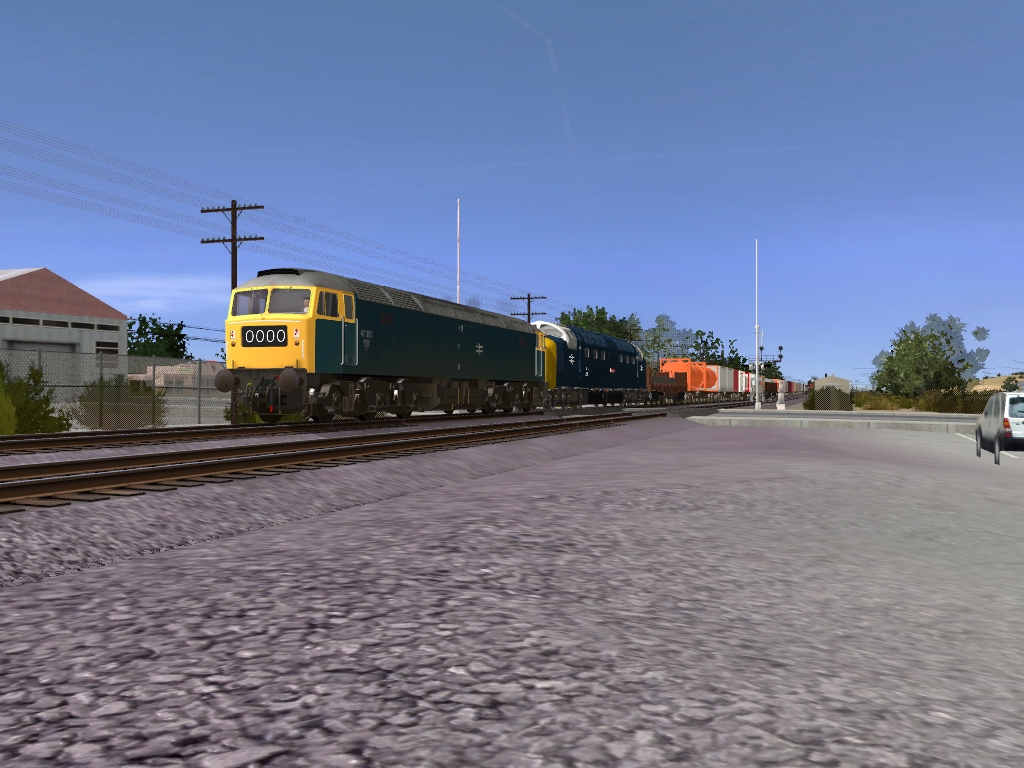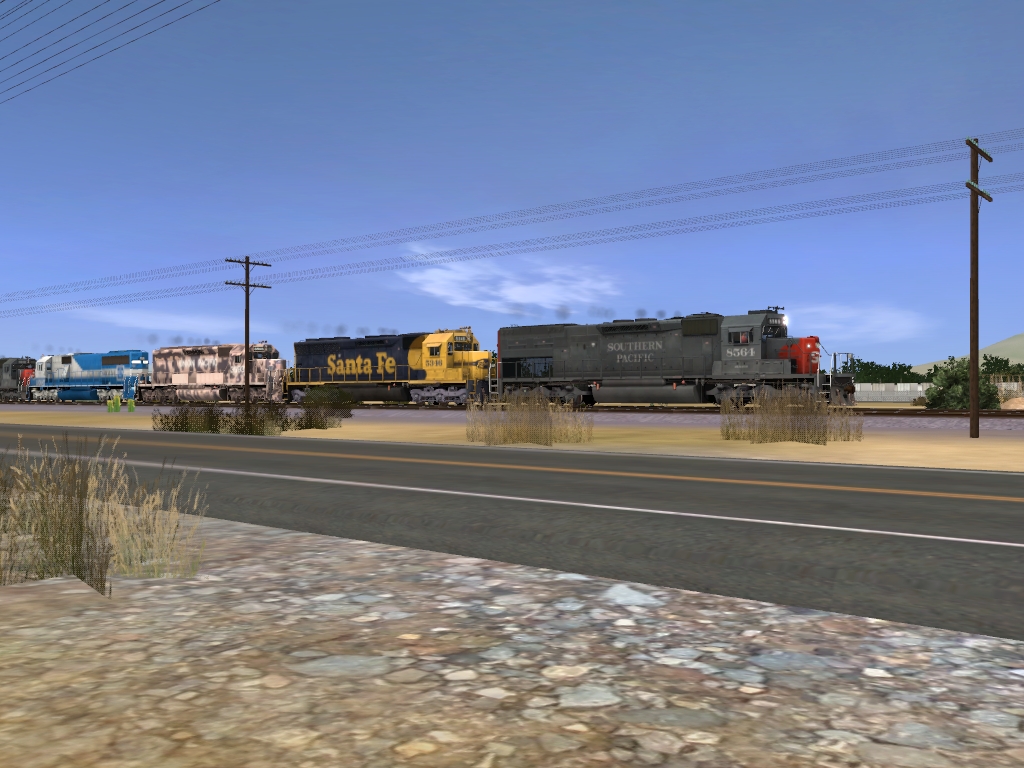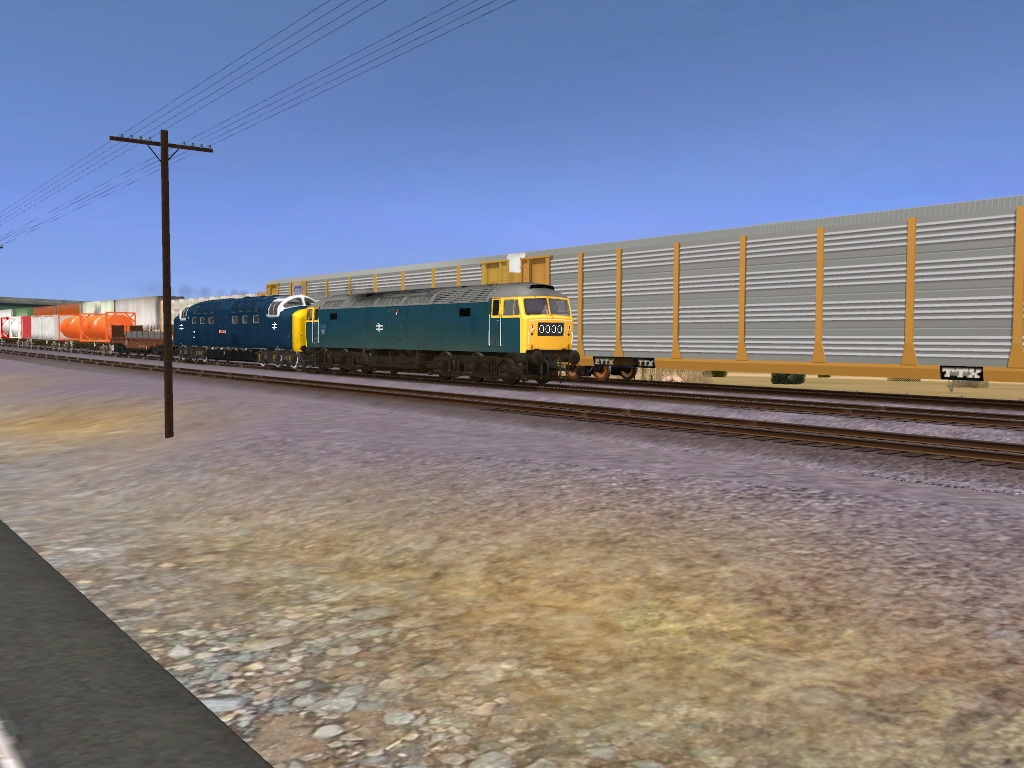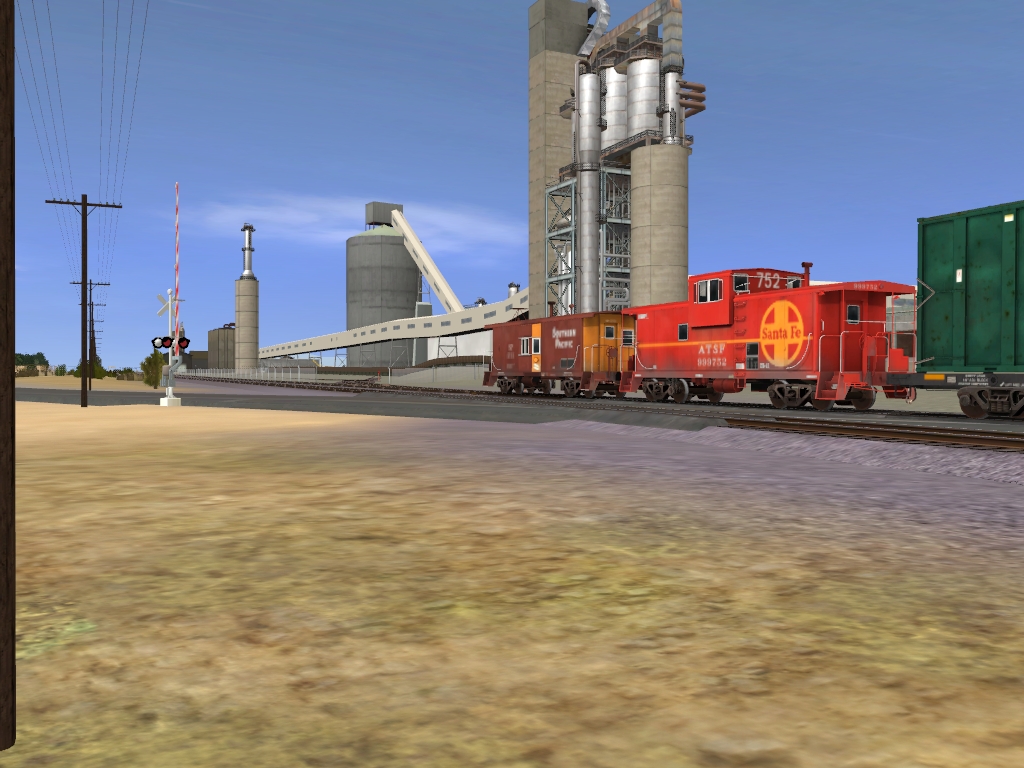(First set of pics has been split into five posts. (# 1, 2, 3, 5, 6))
A few years ago, 22 to be exact, the then current British Rail president made a claim in a interview with Trains Magazine (which appeared in their December 1990 issue) that BR freight service was not only faster, but marginally better than American freight service. Seeing as we Americans don't like being second in many things, the Southern Pacific responded to BR, challenging them to what would be known as The Great Freight Debate. The event was set for June 20th, 1991. Two other American roads signed on (the Santa Fe and Union Pacific). The challenge was simple, SP told BR to bring over a train that contained a variety of rolling stock that was in use at the time and to bring some locos. The trains would then be put together and brought to the Mojave Sub, where the trains would traverse the famous Tehachapi Loop and the go to the starting point outside of the town of Tehachapi. The finish was at Mojave. The first to get their fully loaded train to the end won. The rule was that there would be one loco per thousand tons. The BR train weighed close to 2000, so they brought four engines, two to power the train and two as spares. The American train was close to 7000 tons, so it got 7 engines, 2 from each of the three railroads and one from EMD.
Being apart of the Santa Fe P.R Department at the time, I, along with several others, were sent to photograph this unusual event. Below are some of the better photographs that I shot that interesting day in June of 1991. Captions are included above every picture.
The two trains sitting just before the loop.

Front end view of both trains.

The American Train starting towards the starting line.

Brand new centerflow hopper and 20,800 gallon tank car. Lettered for a new leasing company called Jointed Rail Services.

The two lead locos, SP SD40T-2 8564 and Santa Fe SD45 5346.

All 7 locos on the American Train. SP SD40T-2 8564, Santa Fe SD45 5346, Union Pacific SD40-2 3593 "Desert Storm", EMD SD60 Demo 1, SP SD45 9030, SF GP60M 130, UP GP60 2024.

A few years ago, 22 to be exact, the then current British Rail president made a claim in a interview with Trains Magazine (which appeared in their December 1990 issue) that BR freight service was not only faster, but marginally better than American freight service. Seeing as we Americans don't like being second in many things, the Southern Pacific responded to BR, challenging them to what would be known as The Great Freight Debate. The event was set for June 20th, 1991. Two other American roads signed on (the Santa Fe and Union Pacific). The challenge was simple, SP told BR to bring over a train that contained a variety of rolling stock that was in use at the time and to bring some locos. The trains would then be put together and brought to the Mojave Sub, where the trains would traverse the famous Tehachapi Loop and the go to the starting point outside of the town of Tehachapi. The finish was at Mojave. The first to get their fully loaded train to the end won. The rule was that there would be one loco per thousand tons. The BR train weighed close to 2000, so they brought four engines, two to power the train and two as spares. The American train was close to 7000 tons, so it got 7 engines, 2 from each of the three railroads and one from EMD.
Being apart of the Santa Fe P.R Department at the time, I, along with several others, were sent to photograph this unusual event. Below are some of the better photographs that I shot that interesting day in June of 1991. Captions are included above every picture.
The two trains sitting just before the loop.

Front end view of both trains.

The American Train starting towards the starting line.

Brand new centerflow hopper and 20,800 gallon tank car. Lettered for a new leasing company called Jointed Rail Services.

The two lead locos, SP SD40T-2 8564 and Santa Fe SD45 5346.

All 7 locos on the American Train. SP SD40T-2 8564, Santa Fe SD45 5346, Union Pacific SD40-2 3593 "Desert Storm", EMD SD60 Demo 1, SP SD45 9030, SF GP60M 130, UP GP60 2024.

Last edited:





















